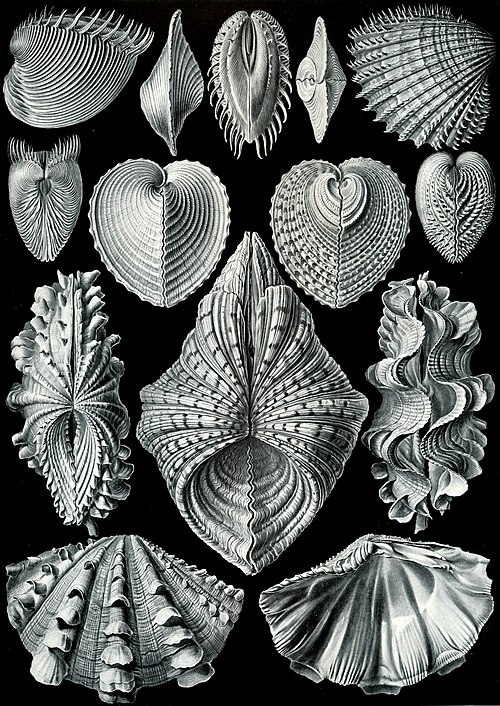Bivalvenoun
Any mollusc belonging to the taxonomic class Bivalvia, characterized by a shell consisting of two hinged sections, such as a scallop, clam, mussel or oyster.
Bivalvenoun
(botany) A pericarp in which the seed case opens or splits into two parts or valves.
Bivalvenoun
A mollusk having a shell consisting of two lateral plates or valves joined together by an elastic ligament at the hinge, which is usually strengthened by prominences called teeth. The shell is closed by the contraction of two transverse muscles attached to the inner surface, as in the clam, - or by one, as in the oyster. See Mollusca.
Bivalvenoun
A pericarp in which the seed case opens or splits into two parts or valves.
Bivalveadjective
Having two shells or valves which open and shut, as the oyster and certain seed vessels.
Bivalvenoun
marine or freshwater mollusks having a soft body with platelike gills enclosed within two shells hinged together
Bivalveadjective
used of mollusks having two shells (as clams etc.)
Univalveadjective
having one valve; typically used to refer to mollusks, notably slugs and snails.
Univalveadjective
consisting of a single valve or piece, used to refer to a shell.
Univalvenoun
A univalve mollusk or its shell.
Univalvenoun
A shell consisting of one valve only; a mollusk whose shell is composed of a single piece, as the snails and conchs.
Univalveadjective
Having one valve; as, a univalve shell or pericarp.
Univalvenoun
a class of mollusks typically having a one-piece coiled shell and flattened muscular foot with a head bearing stalked eyes
Univalveadjective
used of mollusks, especially gastropods, as snails etc.
















































